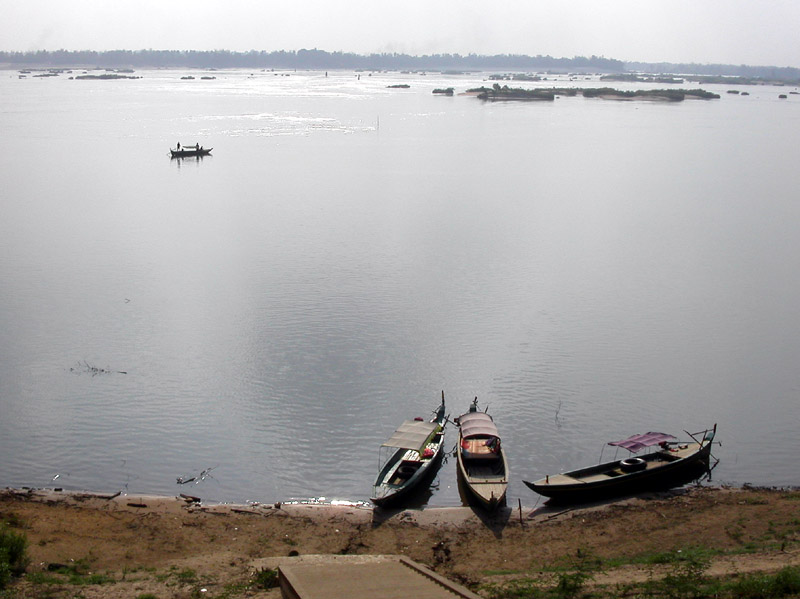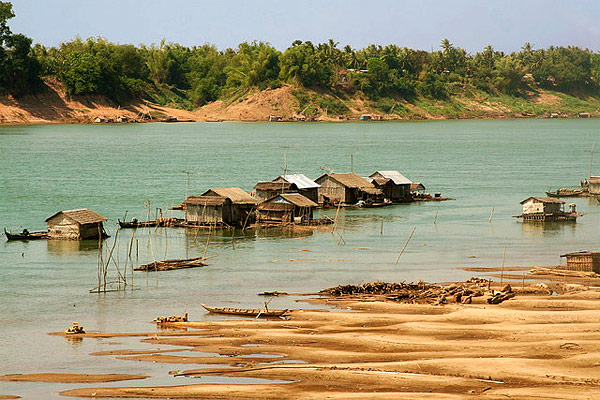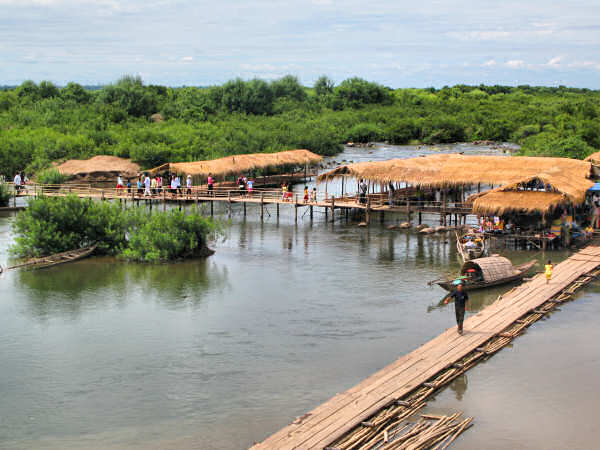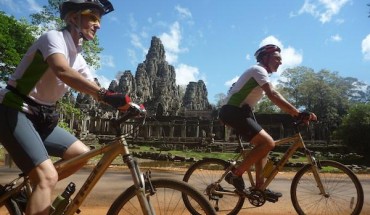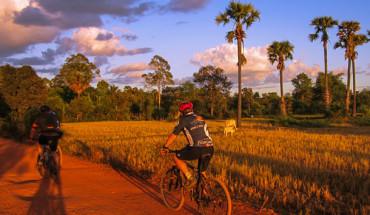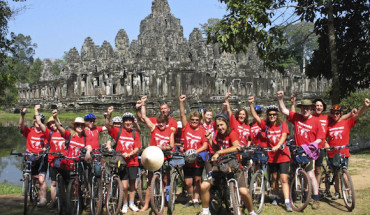Kratie (pronounced ‘Kratcheay’) is a port town on the Mekong roughly halfway between Phnom Penh and Laos. In many ways it is a delightful place with a relaxed atmosphere and some good examples of shop house architecture.
Yet with the murky majesty of the Mekong dominating the town, sunset is a real highlight in Kratie, as the burning red sun descends slowly below the shore line.
Koh Trong Island, directly opposite Kratie town, has a lovely 8-km stretch of sandy dunes (in the dry season) where you can swim and relax. Aside from the beach, the island consists of small market farms and a simple, laid-back rural life – highly recommended for those who want to chill out. On the south side is a small Vietnamese floating village.
Kratie’s main claim to some modicum of fame are the Irrawaddy dolphins that inhabit this portion of the Mekong (Kampi Pool), 15 km north of the town on the road to Stung Treng. The best time to glimpse these rare and timid creatures is at sunrise or sunset when they are feeding.
Kampi Rapids 3 km north of Kampi Dolphin Pool, also known as Kampi Resort, provides a refreshing and picturesque area to take a dip in the clear Mekong waters (during the dry season). A bridge leads down to a series of scenic thatched huts which provide shelter for the swimmers.
Twenty one kilometres further north of the Kampi Pool is Sambor, a pre-Angkorian settlement, but today, unfortunately, not a single trace of this ancient heritage exists. The highlight of a trip to Sambor is as much in the journey, through beautiful countryside, as in the temples themselves. Replacing the ancient ruins are two temples. The first and most impressive is the 100-column pagoda, rumored to be the largest new pagoda in the country. It is a replica of the 100-column wooden original, which was built in 1529. During the war, Pol Pot operated out of the complex, killing hundreds of people and destroying the old pagoda. The new one was built in 1985 (perhaps the builders were slightly overzealous – it features 116 columns). Some 300 m behind the gigantic pagoda sits a much smaller and arguably more interesting temple. The wat still contains many of its original features including a number of wooden pylons that date back 537 years.


